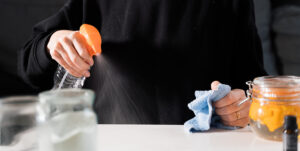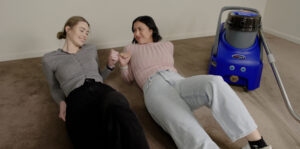Tips to toilet train your puppy
There’s no doubt that puppies are adorable and fill your life with joy, but be warned, they can make quite the mess if not toilet trained properly. Hence teaching your puppy the right place to go is a valuable investment of your time and an essential part of your pup’s development. Here are a few tips to toilet train your pup effectively!
Routine training from the start
Toilet training is an integral part of general puppy training, and it’s important to start as soon as your pup arrives home. Establishing clear ‘no go’ zones for any toilet business and creating a strict toilet training routine is a good start to guide your pup through this transitional stage. Next, allocate an area where you would like your pup to toilet – this might be a pee pad on your apartment balcony, in a bathroom or simply outside in a garden. Then follow a strict routine to take them to this area during specific times of the day such as:
- As soon as they wake up
- After playing
- After eating
- After being in a crate
Dogs can be taught to “go” on cue, which can be very handy. Use simple one-word commands such as “toilet” or “peetime” (or simply any word you like as long as you use it consistently), immediately followed by praise using a gentle tone to reward them for successfully going to the toilet in the correct place. Following a strict routine helps to eliminate any unwanted accidents in other areas and helps your pup to understand the right place to do their business.
Pay attention to signs
Just as you communicate with your pup, they will also try to communicate with you in return via body language. Understanding these certain tell-tale signs will prove to be invaluable and will help to avoid unwanted accidents indoors. Behaviours such as more than the usual sniffing around, restlessness, circling before squatting and constant whining may indicate that your pup really needs to go. When this happens, this is the perfect opportunity to remind your pup of the spot you’ve allocated for them to use. Small breeds of dogs may need to urinate more frequently as compared to larger breeds due to their smaller bladders. Young pups may also need to go to the bathroom more often than adult dogs, sometimes as often as every 20 – 30 minutes.
Britex tip: Your puppy’s age in months plus one is the number of hours your puppy will be able to hold its pee. So, a 3 months old pup should be taken out once every 4 hours throughout the day.
Praise over punishment
When it comes to toilet training, punishment is an ineffective technique as it just means your puppy will be reluctant to “go” in front of you. This makes it harder to reward the correct behaviour and can lead to the pup going elsewhere to do their “business”. Remember that your home is new territory for your pup and sometimes the assimilation process can be a little stressful on our furry little friends. When it comes to toilet training, patience is a virtue and persistence is key, so if your pup has gone to the toilet in the wrong place, avoid yelling or getting angry. Simply redirect them to the right place and try again. Positive reinforcement is a far more effective and successful technique for toilet training. Your dog will soon associate going to the toilet in the correct spot, with the fact that it’s doing something right
Britex tip: Never ever rub your puppy’s nose in their mess or resort to physical punishments. Instead offer lots of praise or a play session with the pup to reward it for a job well done.
Accidents happen
During toilet training you need to remember that accidents will happen and when they do, don’t get angry. It is important to understand that despite your best efforts to toilet train your pup, it takes time for young puppies to have full control over their bladders, and it is highly unlikely that your pup is making a mess on purpose. Being angry will not solve anything and may affect the relationship between you and your fur baby. Toilet training is all part of the developmental process, so accidents will happen without the pup being able to prevent or control them while they are learning the ropes.
When accidents do happen, it is important to use products that thoroughly remove any residual odours of dog urine and faeces. Simply said, if the area smells like a toilet, your pup will continue to use it as one. Thankfully, there are enzyme-based products on the market that neutralize and deodorise pet-related stains such as dog urine. Britex Urine Remover features a unique ‘no-touch, no scrub’ formula, meaning you don’t have to blot or touch any dog urine stains. Instead just spray the area, cover it with a cloth and wait. The enzymes in Britex Urine Remover will work to draw moisture and stains up and out of carpet, upholstery and hard surfaces, breaking up the uric acid crystals and destroying underlying bacteria and odours from the dog urine stain. You can also use Britex Urine Remover to clean up dog poo. Be sure to remove all of the solids first, then spray, apply a cloth and wait.
Britex Urine Remover is also an effective deodoriser against pet-related odours such as dog urine smells in the household. Britex Urine Remover is pet and family-friendly, so you can rest assured your loved ones will not be exposed to harsh chemicals.
All Britex products are available at the Britex hire stand in Bunnings Warehouse and selected Woolworths, Coles, IGA, Mitre 10, and Home Hardware stores. Britex Urine Remover is also available to buy online and at participating Bunnings Warehouse, Woolworths and Coles stores.

10 Carpet Cleaning Myths We’re Putting to Rest, Once and For All.
While vacuuming the visible crumbs is a great start for your carpet, believe it or not, it’s not a one stop solution. That’s just one

We Tried the CleanTok Hacks Everyone’s Talking About in 2025
Let’s face it, CleanTok has a hold on us. One second you’re checking the weather, next thing you know it’s midnight and you’re watching someone

The No-Drama Cleaning Rota That’ll Save Your Sharehouse
Living in a sharehouse can be the best of times: impromptu dinners, late-night chats, someone always around to water your plants. But nothing sours the

Five Mud-Busting Methods to Keep your Flooring Spick & Span in Winter
Rainy days might be good for the garden and a Netflix binge, but your floors? Not so much. Wet umbrellas dumped just about anywhere, plus
